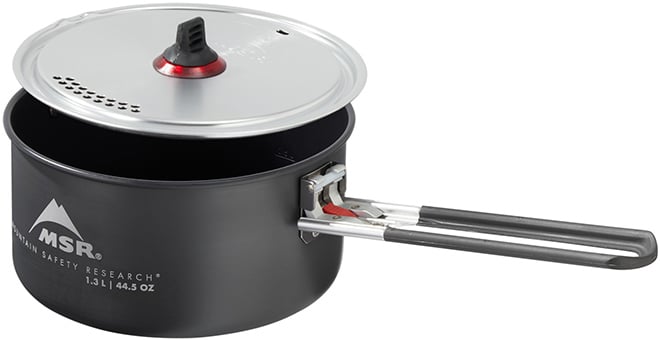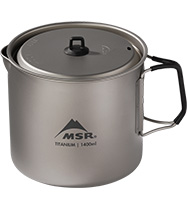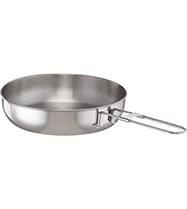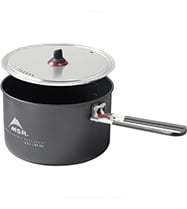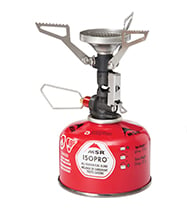Backpacking Cookware: Making It All Fit in Your Pack
Whether you’re a mountaineer or an ultralight fastpacker, saving space in your pack is critical. Packing your gear as efficiently as possible also keeps it organized and easy to find. One of the best places to look for space-saving opportunities is your backpacking cookware. As empty space, pots can store all sorts of unwieldy gear inside like stoves, utensils, mugs and more. Here, we break down how to look at your cookware as a packing system and outline some of the popular MSR stove and pot nesting combinations.
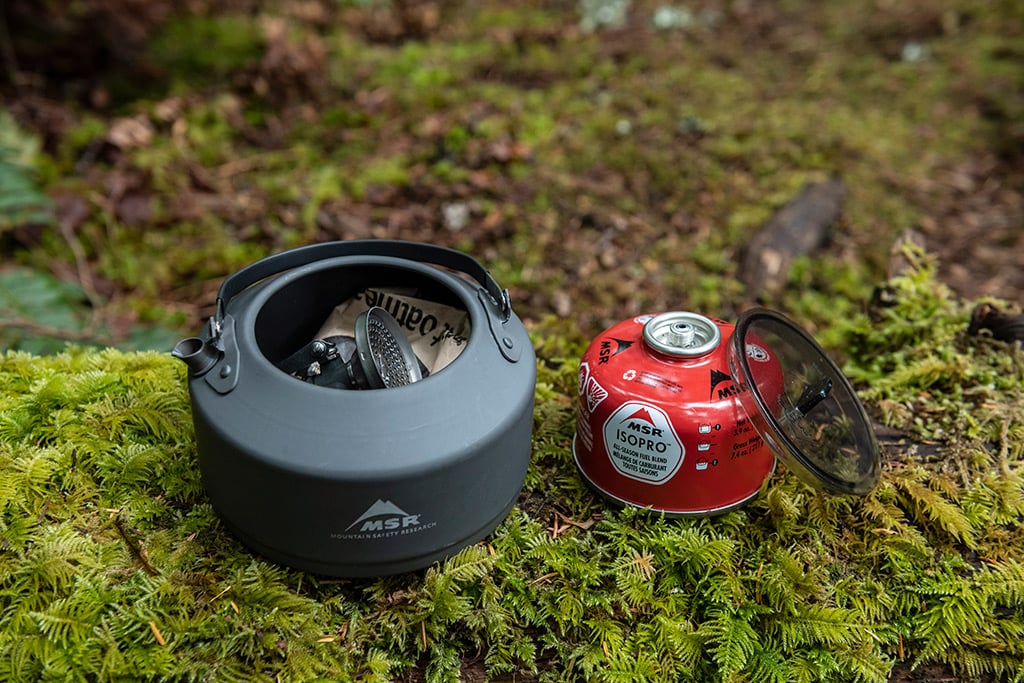
Think Nesting
So, you have a backpack and a mountain of gear that, somehow, needs to fit into it. Consolidation is key—nesting smaller items inside larger ones reduces your overall gear volume. With a tighter gear system, you’ll eliminate excessive danglers on the outside of your pack. It also means you can opt for a smaller (and therefore lighter) pack if you desire.
Pots are an obvious choice to store things in (they’re meant to hold stuff after all, albeit food). Packing your stove and fuel canister, if they fit, keeps your cooking gear together. If there’s room, go further: add your lighter, utensils, food, coffee/tea, mug, etc.
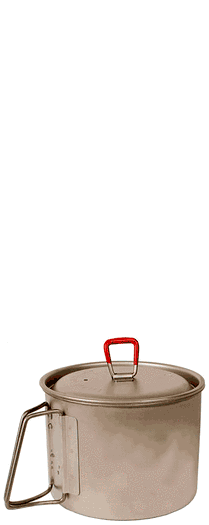
Larger pots offer endless stowing possibilities: clean socks, towels, bear bag, etc. Stuffed full, this modular compartment (now one of your heavier items) is ideal for placing at the mid-bottom of your pack—where heavier stuff goes, and in that basin that’s shaped perfectly for a pot.
To protect your nested gear, wrap any sharp edges, like stove legs, in a camp towel. This also helps reduce rattle while you’re walking down the trail.
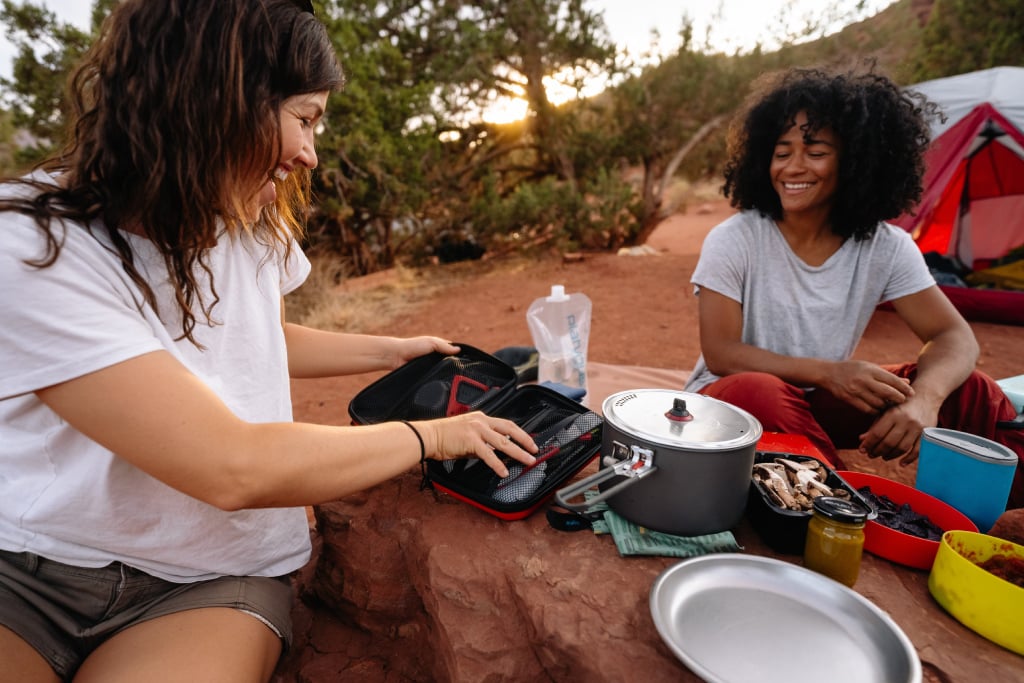
Embrace Folding and Multipurpose Gear
Besides being packed efficiently, gear can also be designed for efficiency. Cooking gear that folds down for packing but expands for full functionality, such as a folding cutting board, saves space without sacrificing your culinary experience.
Any gear that earns its way into your pack should generally have more than one purpose. For example, MSR’s Alpine Utensils are ultralight, fold down and each offers multiple tools in one, like a spatula with a built-in cheese grater or a ladle with graduation measurements.
The more functionality each piece of gear offers, the fewer items you have to bring.
A pot is no exception. If you’re paring down, your pot can double as a bowl and/or a mug. Some MSR pots, such as the Titan™ Cup, Trail Mini™ Solo Pot, and WindBurner® Personal Pot, were designed to be both cooking and eating vessels.
Finally, even the shape of your pot can eke out space savings. Pots that feature a taller, narrower profile like MSR’s Trail Lite™ 2 Liter Pot, rather than short, stout shapes, slip easier into smaller packs.
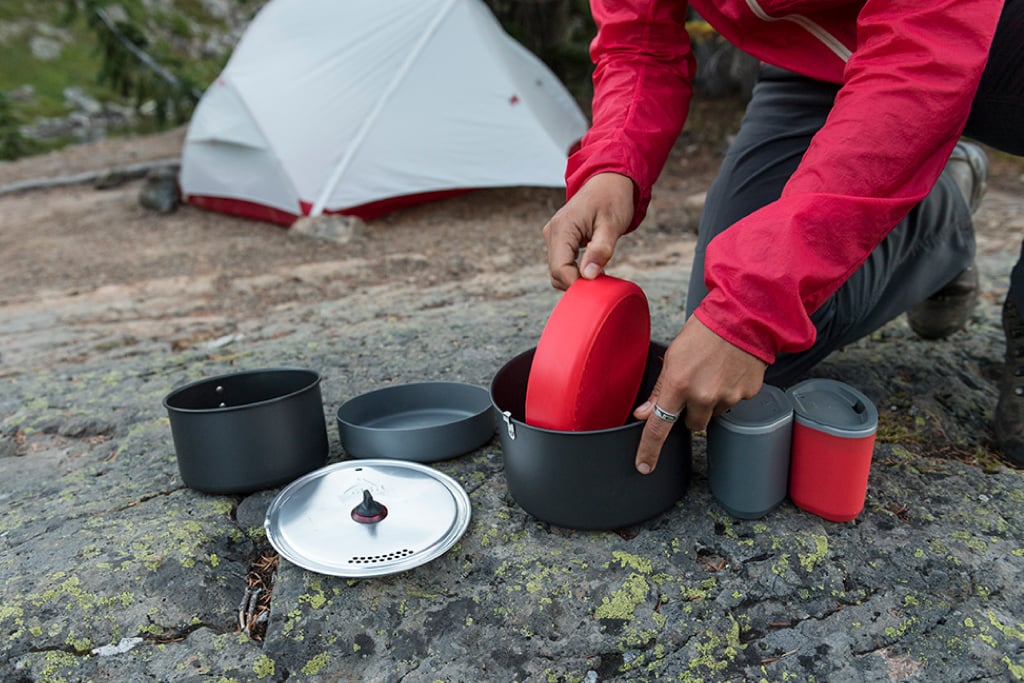
Nesting cook set or individual pieces?
Whether you opt for a pre-assembled cook set or piece together your own kit à la carte depends on your priorities.
On one hand, engineered cook sets do a lot of packing calculation for you—you know it’s all going to fit together. If you need plates, mugs and more, cook sets make easy purchase decisions. They also offer grab-and-go convenience during the midnight packing frenzy before a trip!
Stove kits, which feature a stove in addition to cookware, take this convenience one step further, covering all of your camp kitchen needs in one nesting bundle.
On the other hand, piecing together your own cook kit allows you to customize it based on your weight preferences and cooking goals. Here, choosing compact, efficiently engineered gear matters. Adventurers moving fast and light likely prefer this approach, forgoing the luxury of plates and mugs for hyperlight pairings, like a titanium cup and the featherweight PocketRocket® 2 stove.
As you shop for backpacking cookware, pay attention not only to its materials but to the nesting and packing opportunities it provides.
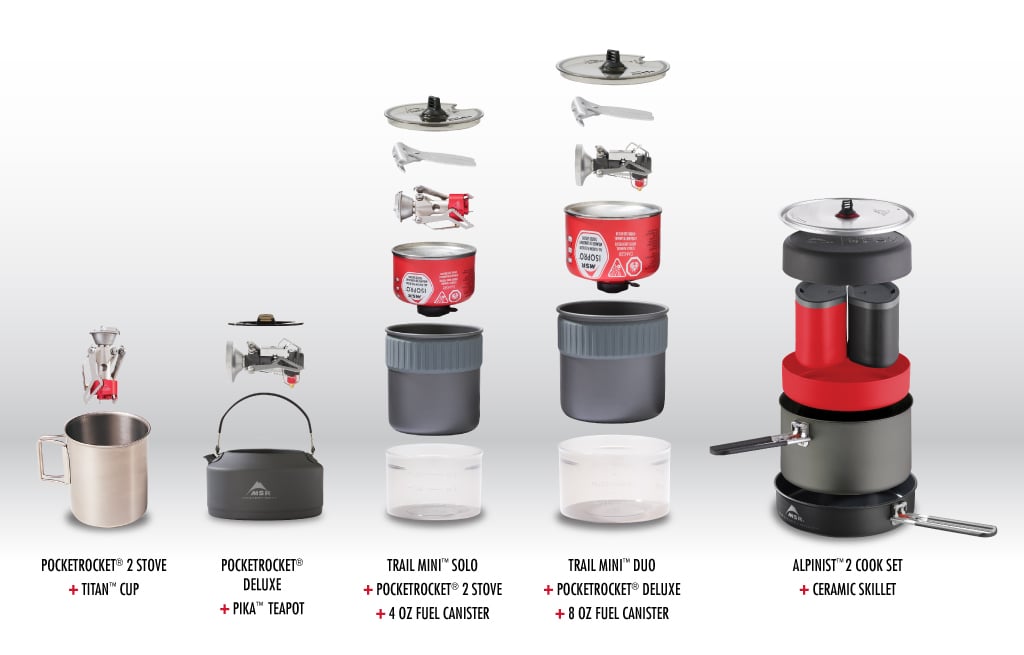
Popular MSR stoves and pots that fit together
Diehard minimalists relying on the tiniest stove and pot possible and backpackers seeking larger systems alike must conserve space in their packs. To help you pair your stove with the right pot for nesting, here’s a look at popular MSR stove-pot combinations.
| Titanium Cookware | Stove Pairings | ||||
|---|---|---|---|---|---|
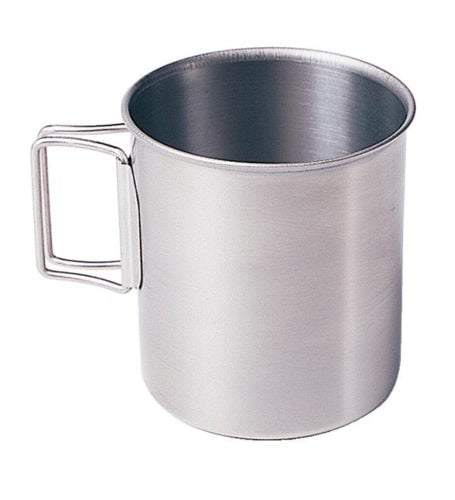
|
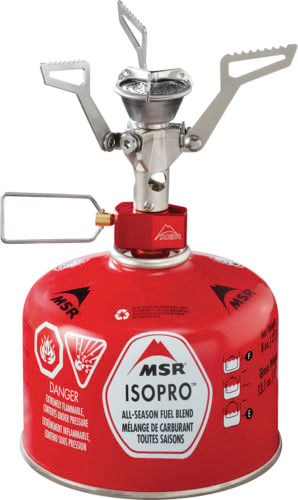
|
||||
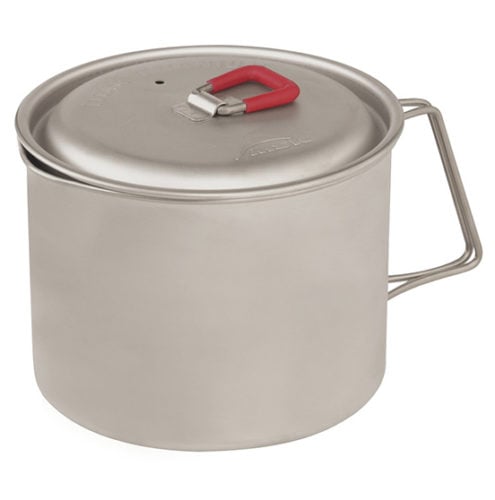
|
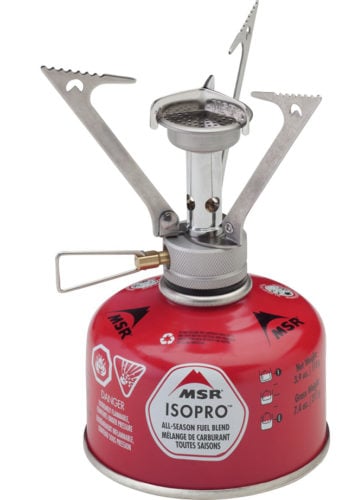
|

|
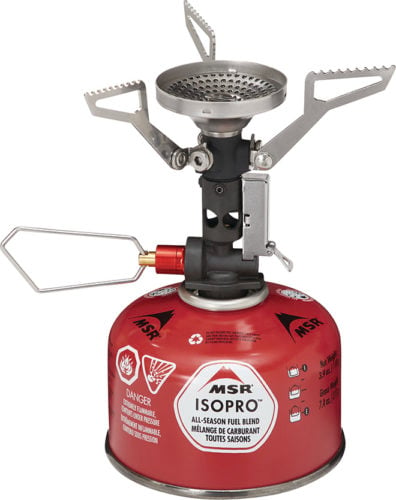
|
||
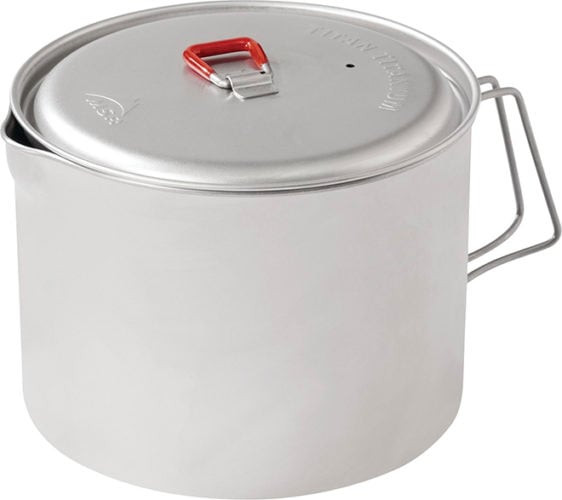
|

|

|

|
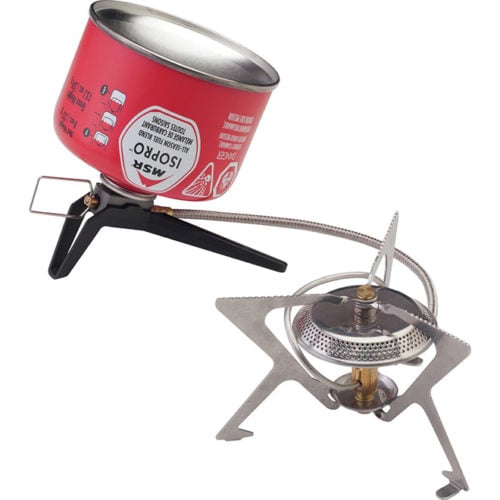
|
|
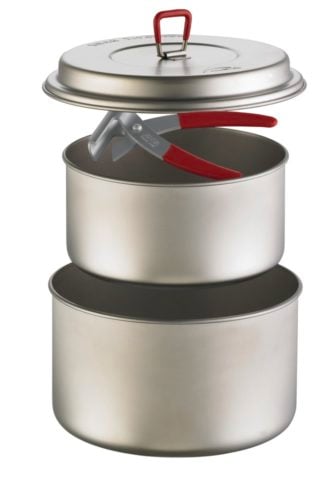
|

|

|

|
| Aluminum Cookware | Stove Pairings | ||||
|---|---|---|---|---|---|
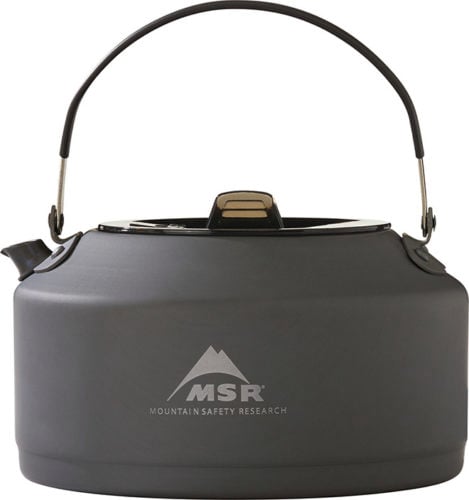
|

|

|

|
||
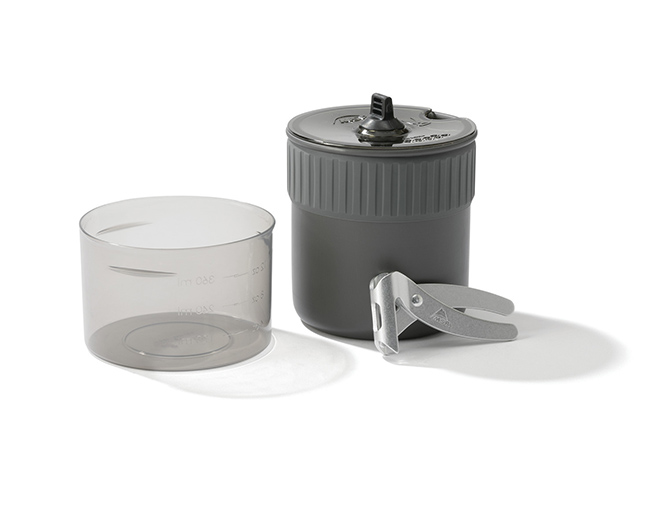
|

|
||||
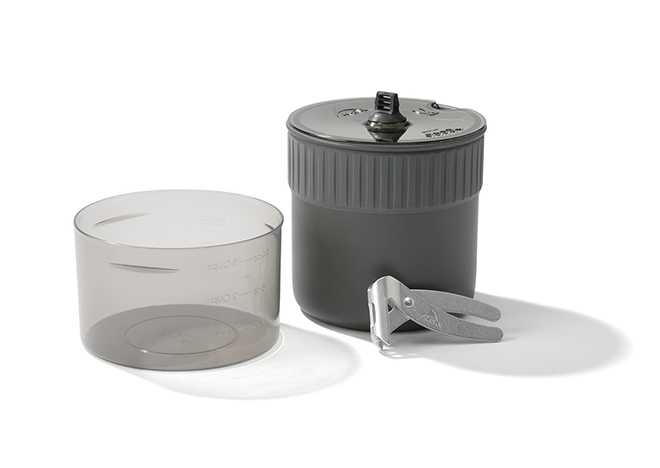
|

|

|

|
||
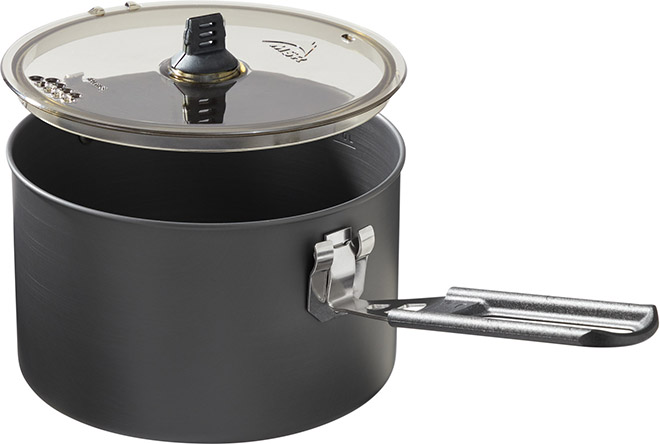
|

|

|

|
||
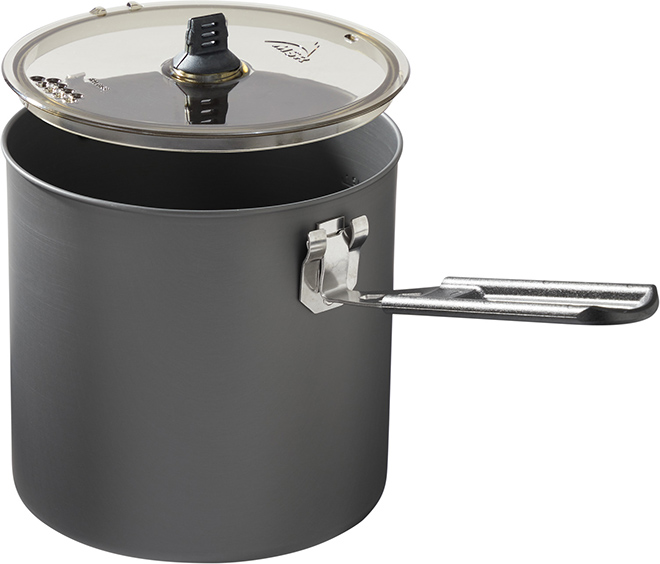
|

|

|

|

|
| Ceramic Cookware | Stove Pairings | ||||
|---|---|---|---|---|---|
|
|

|

|

|
||
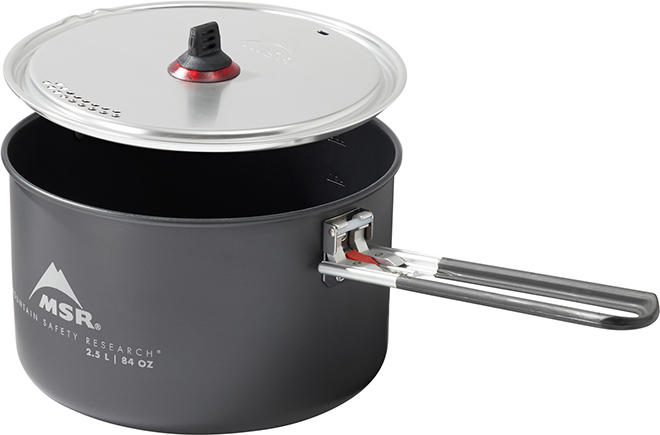
|

|

|

|

|
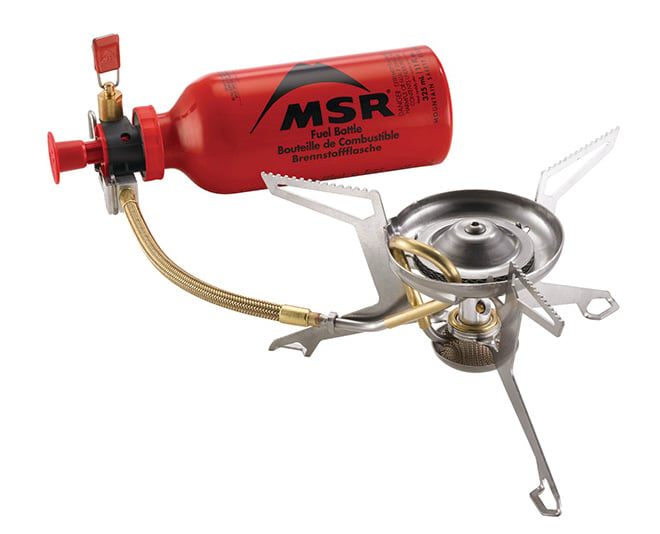
|
| Stainless Steel Cookware | Stove Pairings | ||||
|---|---|---|---|---|---|
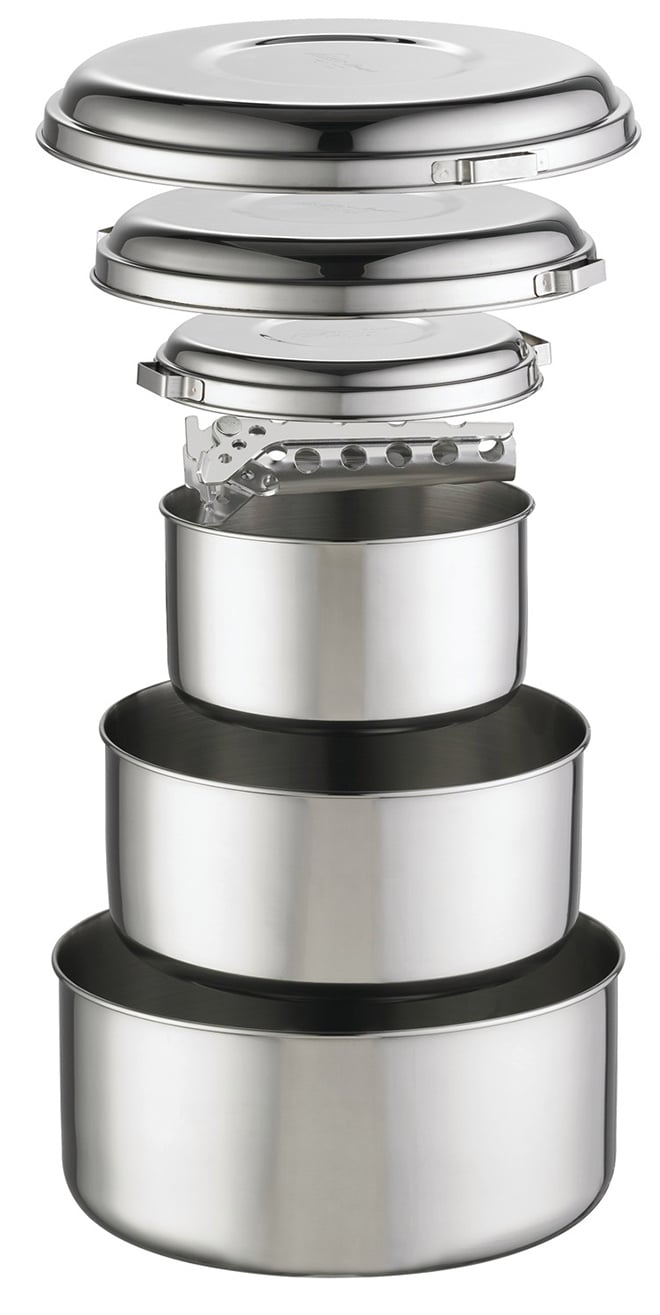
|

|

|

|
||
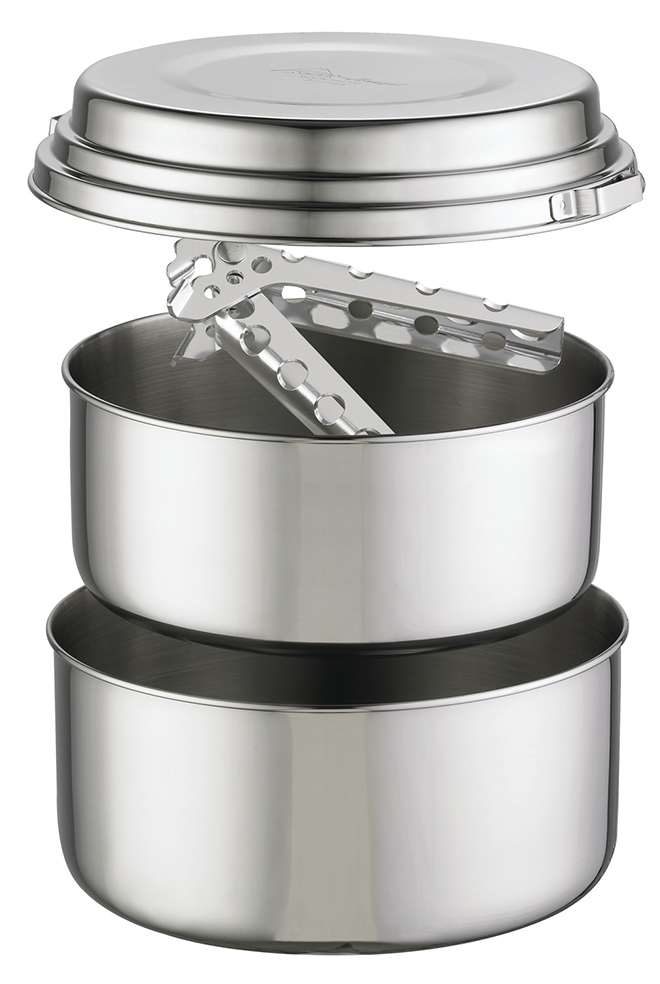
|

|

|

|
||
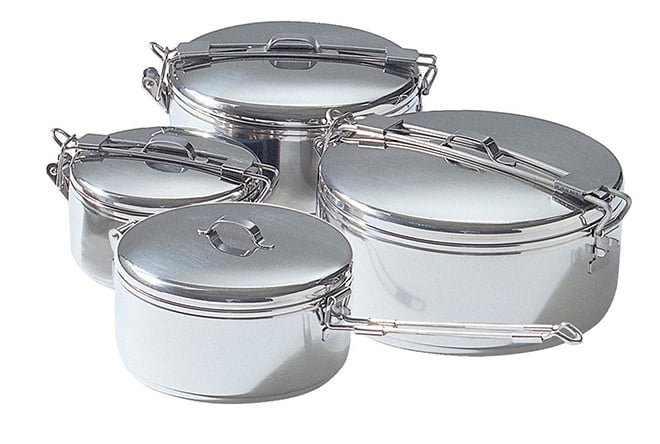
|

|

|

|
||

|

|

|

|
||

|

|

|

|
||

|

|

|

|
Which fuel canister fits inside my MSR pot?
Stowing your fuel canister inside your pot is nesting goal number two. All MSR pots—with the exception of the Titan Cup and the Pika™ Teapot—are designed to nest either a 4-ounce or 8-ounce fuel canister. Here are the pots that fit each.
All of these will fit at least a PocketRocket 2 stove along with the fuel. Those that fit an 8-ounce canister will also fit the 4-ounce.
| Fuel Canister Size | MSR Cookware | |
|---|---|---|
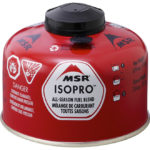
|
|
|
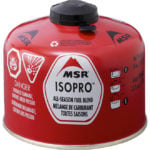
|
|
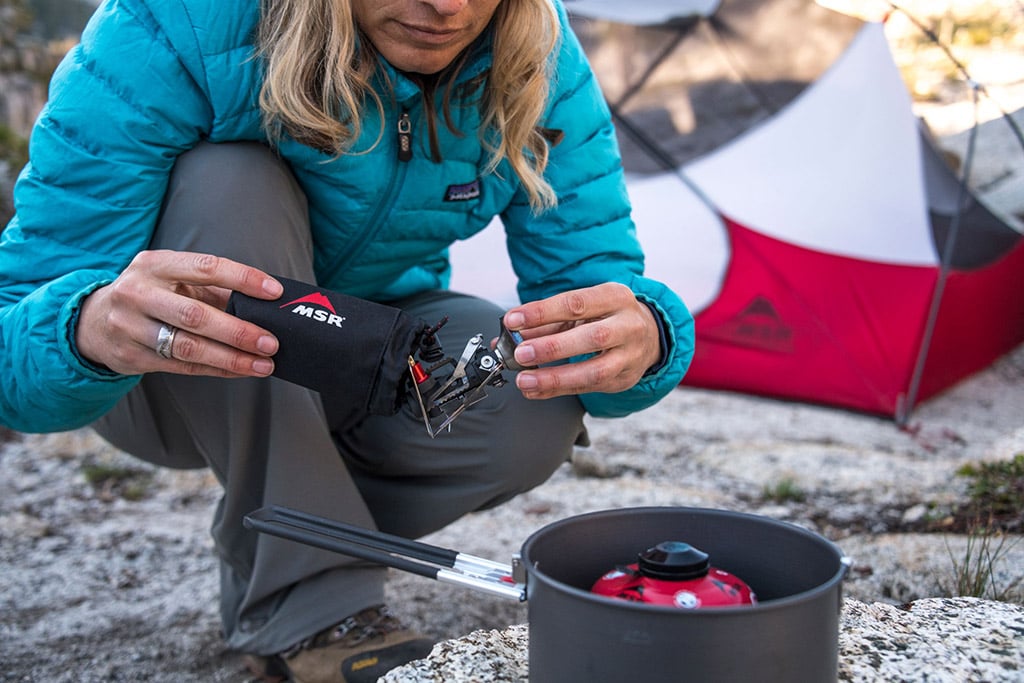
As you’re choosing your canister sizes, it’s important to know how large of a canister you can use with a certain stove if that stove is particularly small or tall. Here are the two we get asked about most:
Largest fuel canister for PocketRocket stove models:
Never use fuel containers larger than 8 ounces (227 grams) or more than 4 inches (~10 centimeters) in height without an MSR Universal Canister Stand or a Low-Down™ Remote Stove Adapter. Never use fuel containers larger than 16 ounces (450 grams).
Largest fuel canister for WindBurner Personal stove (top-mounting design):
Never use fuel canisters that weigh more than 8 ounces (227 grams) and never use canisters more than 4 inches (~10 cm) high. Use an MSR canister stand or a Low Down Adapter with canisters less than 4 inches (~10 centimeters) in diameter.
Where does the skillet go?
We’ve talked cook sets and stove-pot combos, but what about the more elaborate tools of the backcountry chef? Nesting a skillet onto the bottom of your pot allows you to carry it into the wilderness without much of a packing penalty. Here are the sets our two skillets nest with:
| Skillet | Cook Set Pairings | ||||
|---|---|---|---|---|---|
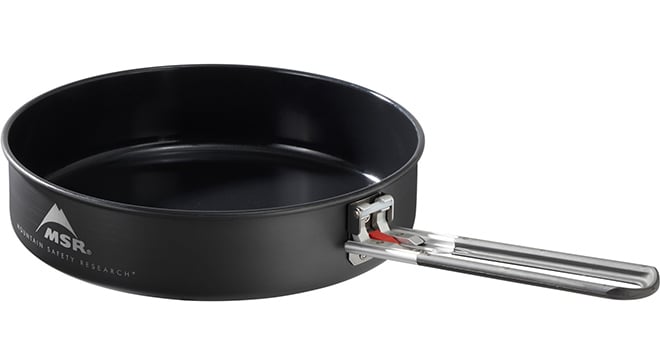
|

|
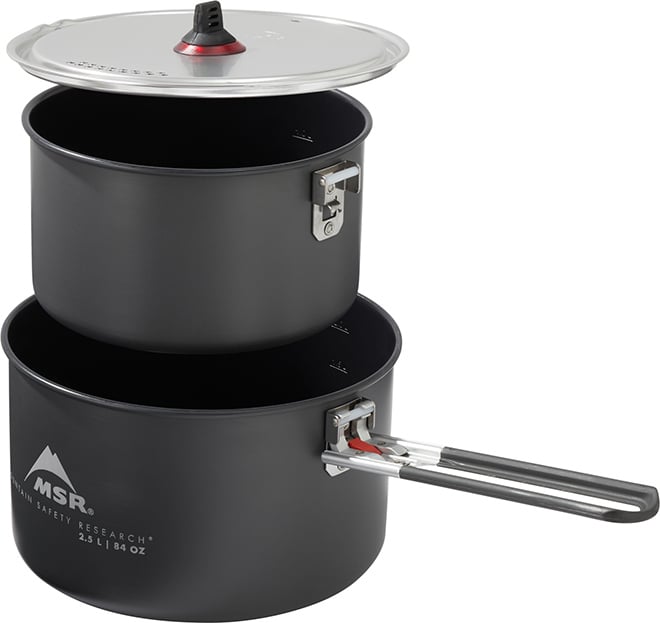
|
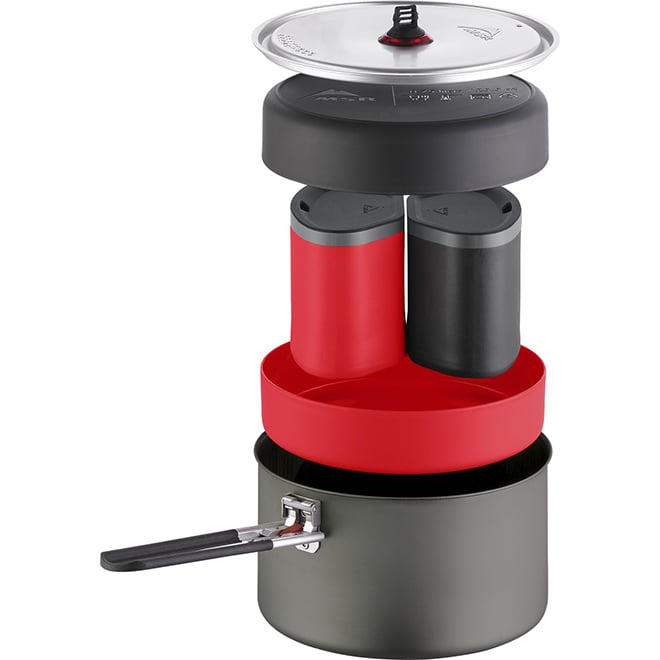
|
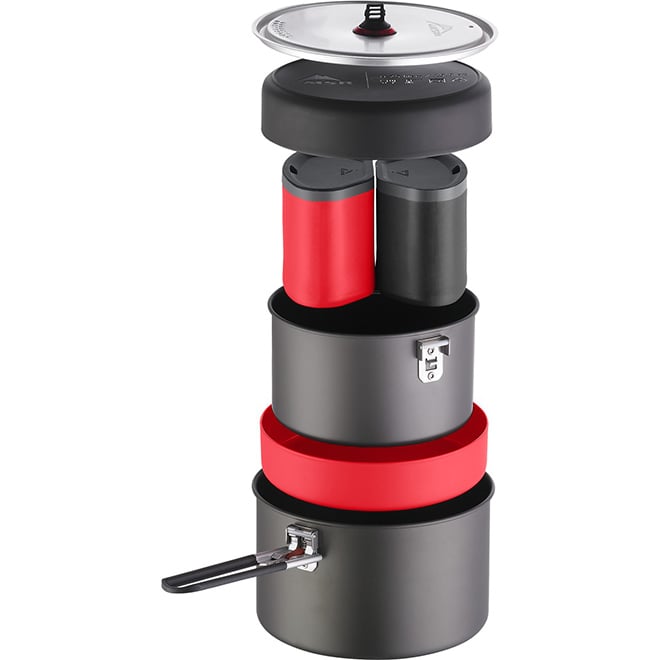
|
|
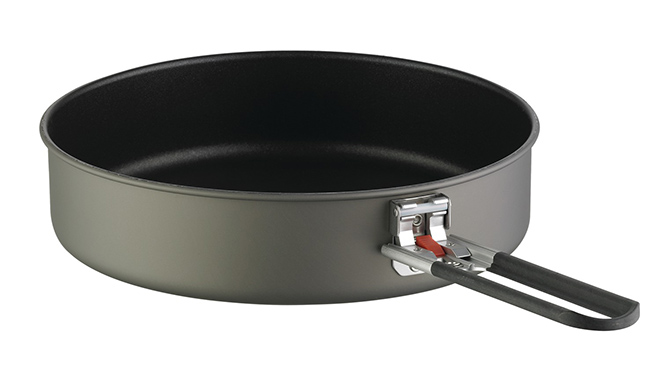
|

|

|

|

|
A note on backpacking cookware material
Choosing a cook set can be a little overwhelming. The easiest place to begin is by considering your weight and cooking goals. Some materials are lighter, while others better conduct heat. Your weight and cooking priorities will help you determine the cookware material you wish to use.
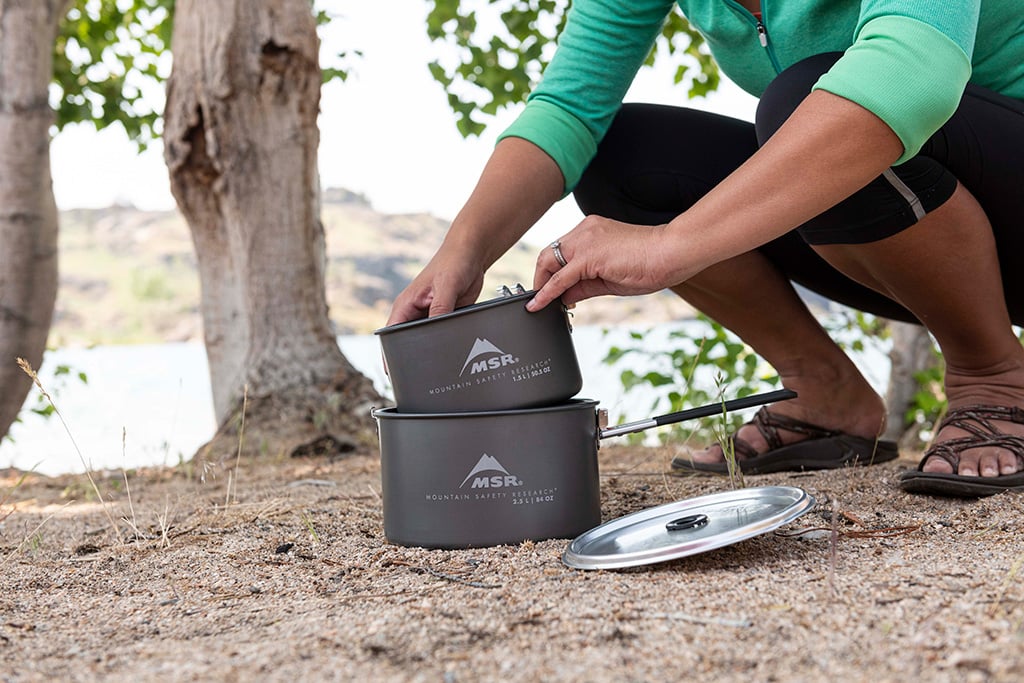
Consider a stove system for hyper-efficiency
Stove systems, like MSR’s Reactor® and WindBurner® systems, take efficiency to a whole new level. These units feature a stove and pot specifically engineered to work together. The benefits include speed, wind protection and fuel efficiency. In addition, all components–and a fuel canister–nest inside the pot.
Stove systems were once considered purely water-boilers (the Reactor is still the fastest in the backcountry, boiling a half-liter of water in just 1.5 minutes). But our expanded WindBurner collection now features a compatible skillet, saucepot and stockpot—which all nest together. In addition, the remote-burner stove design that comes with WindBurner’s larger pots even nests inside the smallest 1.0L Personal Pot.
Why opt for a stove system over a standalone cook set and stove? The systems’ integrated designs make them windproof, faster and more fuel-efficient in the real world, where even a slight breeze affects a ‘regular’ stove’s flame. And they’re compact, all-in-one units.
Still, stove systems aren’t for everyone. Other pots cannot be used with the Reactor or WindBurner’s unique radiant burner. If you own a pot or a stove already, you might wish to maintain that flexibility. They can also be heavier than smaller canister stoves like the PocketRocket plus cookware.
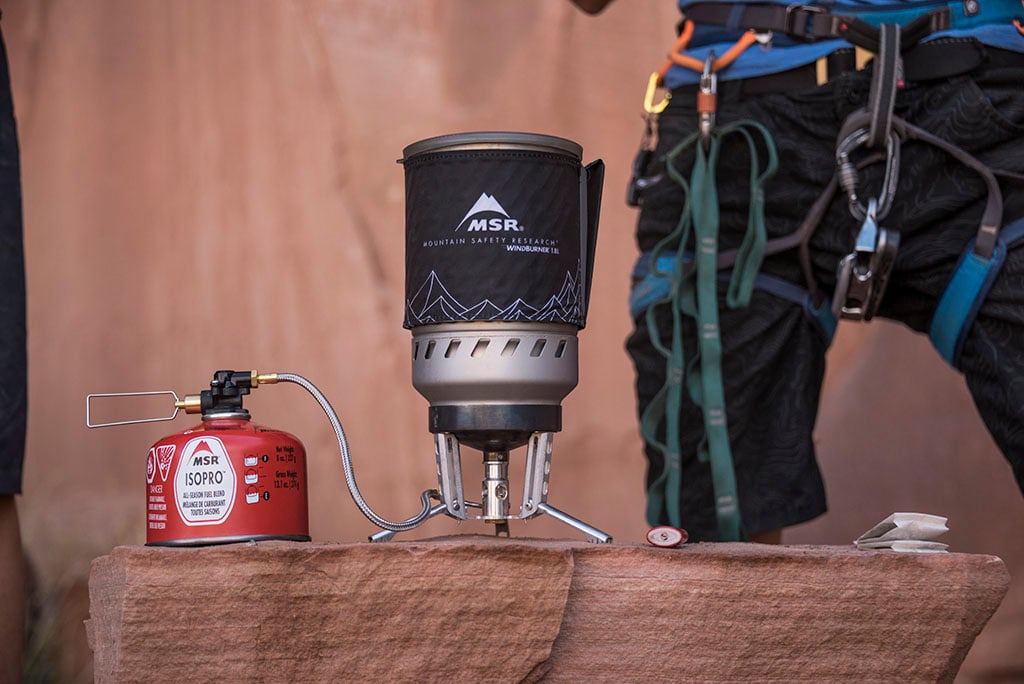
Other tips for packing efficiency
Stowing things in your pots is a no-brainer for condensing your gear load. Another way to keep things organized and achieve the perfect gear Tetris is to use stuff sacks and zippered pouches. Stuff sacks help you literally shrink the size of soft items like clothing, and allow you to minimize loose items floating in your pack.
This stuff sack-packing philosophy is great when you have a large, cavernous pack.
On the opposite end of the spectrum, tiny bike touring panniers and tailored bikepacking bags are so small, you’ll actually want to shove each piece of gear in individually. That way, you can fill every nook and cranny possible. Even your sleeping bag should be smooshed in sans stuff sack.
Regardless of your pack of choice—giant mountaineering rucksack or tiny bikepacking saddle bag—your cookware should swallow up at least a few items. No point in wasting all that oh-so-precious space.
Now, where did you put that lighter?
Read on:
- Keeping it Clean: Backcountry Dishwashing Etiquette
- Cookware Materials 101: Titanium vs. Aluminum vs. Stainless Steel
- Building Your Backcountry Kitchen: Stove & Cookware Pairings
Updated. Originally Published August 21, 2019.

